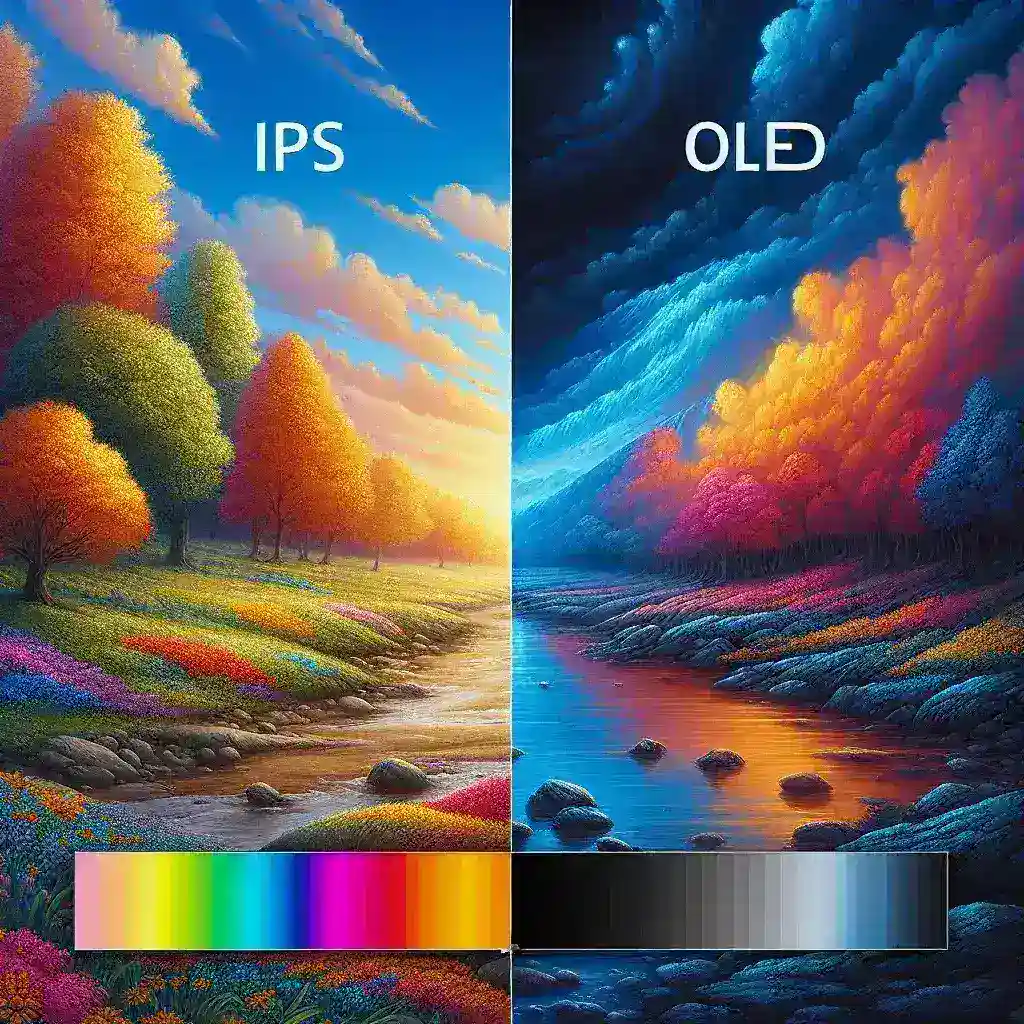Introduction
In the rapidly evolving world of display technology, IPS (In-Plane Switching) and OLED (Organic Light-Emitting Diode) screens are two of the most prominent technologies. Each offers unique advantages and disadvantages, making them suitable for different applications. This article delves into how IPS compares to OLED, exploring their key differences, benefits, and ideal use cases.
Comparison at a Glance
To provide a clear perspective, here’s a tabular comparison of the key characteristics of IPS and OLED displays:
| Feature | IPS | OLED |
|---|---|---|
| Picture Quality | Good | Excellent |
| Color Accuracy | High | Superior |
| Viewing Angles | Wide | Very Wide |
| Black Levels | Moderate | Perfect |
| Brightness | High | Moderate |
| Power Consumption | Higher | Lower |
| Burn-In Risk | Low | High |
| Cost | Moderate | High |
Understanding IPS Displays
Advantages of IPS Displays
- Color Accuracy: IPS displays are known for their exceptional color accuracy, making them a popular choice among graphic designers and photographers.
- Wide Viewing Angles: IPS technology allows for consistent color and brightness even when viewed from different angles, ensuring a better visual experience in group settings.
- Brightness: IPS panels can achieve higher brightness levels, making them suitable for well-lit environments.
- Low Burn-In Risk: Unlike OLED, IPS displays have a significantly lower risk of burn-in, thus enhancing their longevity.
Disadvantages of IPS Displays
- Black Levels: IPS screens cannot achieve true blacks as the backlight is always on, resulting in moderate black levels.
- Power Consumption: These displays consume more power compared to OLED, reducing battery life in portable devices.
- Cost: IPS panels can be more expensive than other LCD technologies, although they are usually cheaper than OLED.
Understanding OLED Displays
Advantages of OLED Displays
- Picture Quality: OLED displays offer superior picture quality with vibrant colors and perfect black levels, providing an immersive viewing experience.
- Color Accuracy: OLED panels are renowned for their excellent color accuracy, ideal for professional work requiring precise color reproduction.
- Viewing Angles: OLED technology provides very wide viewing angles, ensuring minimal color distortion and brightness loss even from extreme angles.
- Power Efficiency: OLED displays are more power-efficient because they emit light directly from the pixels, consuming less energy particularly with dark content.
Disadvantages of OLED Displays
- Burn-In Risk: OLED screens are prone to burn-in, where static images can cause permanent discoloration over time.
- Brightness: While capable of high brightness, OLED panels typically do not match the peak brightness levels of IPS displays.
- Cost: OLED technology is generally more expensive than IPS, contributing to higher prices for devices featuring OLED screens.
Ideal Use Cases
When to Choose IPS
- Office and General Use: IPS displays are well-suited for office work, web browsing, and other general uses due to their balanced performance and lower risk of burn-in.
- Graphic Design and Photography: The high color accuracy and wide viewing angles of IPS screens make them ideal for graphic design, photo editing, and similar creative work.
- Bright Environments: If the primary use will be in bright environments, IPS screens are preferable due to their higher brightness levels.
When to Choose OLED
- Media Consumption: For watching movies, playing games, and consuming other media, OLED displays offer a superior viewing experience with their excellent picture quality and contrasted black levels.
- Mobile Devices: The power efficiency of OLEDs makes them a great choice for smartphones and tablets, helping to extend battery life, especially for dark-themed apps and interfaces.
- Professional Creative Work: Despite the risk of burn-in, the unparalleled color accuracy and picture quality of OLED displays are beneficial for professional video editing and other creative tasks.
Conclusion
Both IPS and OLED technologies have their own unique advantages and are suited to different use cases. When deciding between the two, consider factors such as picture quality, power efficiency, longevity, and cost. By understanding the specific needs and priorities of your use case, you can make an informed decision about the best display technology to choose.

